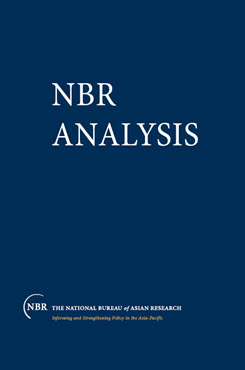Southeast Asian Reactions to China's Peaceful Development Doctrine
Indonesia, the Philippines, and Thailand
The trajectory of China’s improving relations with Southeast Asia across the entire spectrum of bilateral and multilateral interaction has been accelerated under the leadership of President and Party General Secretary Hu Jintao. China is simultaneously deepening existing patterns of economic, political, and socio-cultural cooperation and developing new and more intense patterns of interaction in defense and security affairs. This essay reviews these developments.
The trajectory of China’s improving relations with Southeast Asia across the entire spectrum of bilateral and multilateral interaction has been accelerated under the leadership of President and Party General Secretary Hu Jintao. China is simultaneously deepening existing patterns of economic, political, and socio-cultural cooperation and developing new and more intense patterns of interaction in defense and security affairs. This essay reviews these developments by focusing on China’s relations with three key regional countries—Indonesia, the Philippines, and Thailand— and by exploring three main questions:
- To what extent have China’s diplomatic “charm offensive” and deepening economic ties with its neighbors succeeded in moderating fears in Thailand, the Philippines, and Indonesia of China’s economic and military rise in Asia?
- What are the economic, trade, and security implications of China’s “peaceful rise” for Thailand, the Philippines, and Indonesia?
- What trajectories might China’s relations with these countries take in the next five to ten years, and what developments or shocks might alter these trajectories?
China’s Diplomatic Charm Offensive
Since the early to mid-1990s, the People’s Republic of China (PRC) has sought to allay regional concerns about the “China threat” in order to promote closer ties with Southeast Asia. China’s grand strategy has been encapsulated in a number of shorthand expressions such as “good neighborly relations,” “new concept of security,” and “peaceful rise.” In response to regional concerns and domestic debate, China rebadged its grand strategy in April 2004 by adopting the term “peaceful development” (heping fazhan). In September 2005 this strategy was further refined by the adoption of Hu Jintao’s concept of a “harmonious world.” To underscore this new policy emphasis, China’s annual defense white paper in December 2005 was titled China’s Peaceful Development Road.
China’s peaceful development doctrine builds on firm bilateral and multilateral foundations laid in the late 1990s. In February 1999 China and Thailand signed Southeast Asia’s first long-term cooperative framework agreement. By the end of 2000 all other members of the Association of Southeast Asian Nations (ASEAN) had signed similar agreements, including Indonesia and the Philippines. These documents set out the principles for bilateral relations and committed the parties to regular high-level exchanges and consultations as well as cooperation in a wide range of specific fields.
Beijing strengthened multilateral relations with Southeast Asia by converting China’s dialogue status into a strategic partnership in October 2003, the first such arrangement between China and a regional organization. [1] China… p>
[1] Dialogue between China and ASEAN first occurred in 1991, but it was not until 1996 that China became a formal ASEAN dialogue partner.


